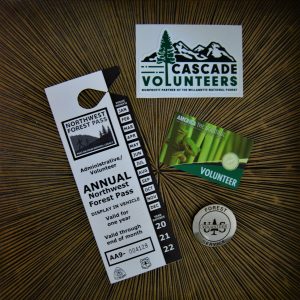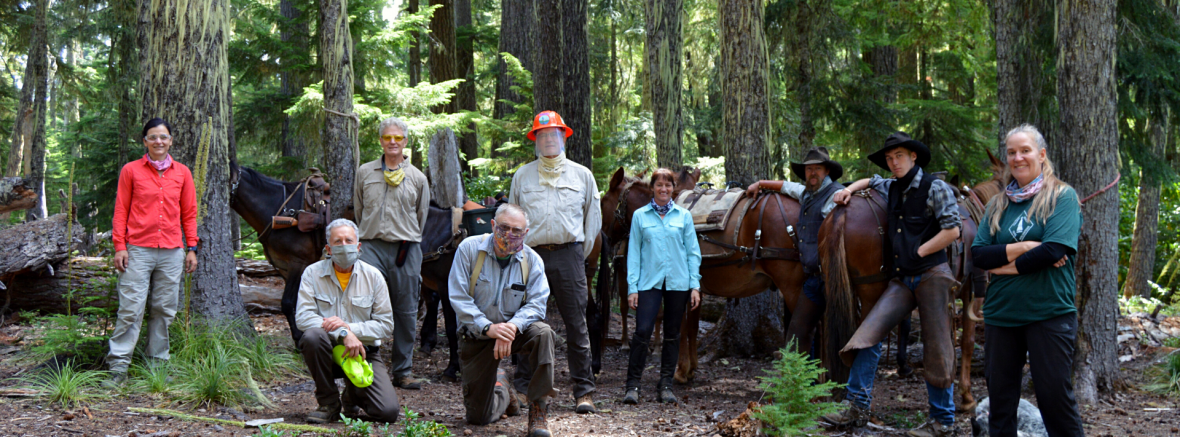Ready to give back where you love to play? Volunteers are needed for a wide range of activities across the Willamette National Forest. You can give back to your public lands by:
- surveying trails for invasive weeds
- answering visitor questions at a ranger station
- stewarding special sites, such as hot springs
- maintaining hiking, biking, and riding trails
- planting trees in fire-affected areas
- teaching Leave No Trace principals
- adopting a lake or trail
- building trail bridges
- and so much more!
Who Can Volunteer?
Anyone over the age of 18 may apply to volunteer. If you are under the age of 18 you may still participate by working with your family, group, club, or any responsible adult(s).
 Are there any Perks?
Are there any Perks?
Absolutely! In addition to knowing that you are serving and protecting our forest, forest volunteers receive…
- A free Northwest Forest Pass for the following year after 16+ hours of service
- A Central Cascade Wilderness Permit for the following year after 40+ hours of service in support of Willamette National Forest Wilderness Areas
- A free America the Beautiful Pass for the following year (free access to any federal lands!) after 250+ hours of service
- Certifications in chainsaw, crosscut saw, first aid, CPR, and more
- Invitations to annual forest volunteer appreciation events
How Do I Get Started?
First, fill out our Volunteer Application. This will help us to gauge your interests and previous experience.
Then, you’ll receive a phone call from one of our volunteer coordinators. They will learn more about you and answer any questions you may have. Our volunteer coordinator will connect you with our various volunteer groups and tell you about any training you may need before serving on the national forest.
Volunteer training events are held each spring and fall. Classes include trail maintenance, trail crew leadership, First Aid/CPR certification, cross-cut and chain saw certification, wilderness stewardship, adopt a trail/lake programs, map/compass, noxious weed identification, monitoring historic sites, survival tips and more.
